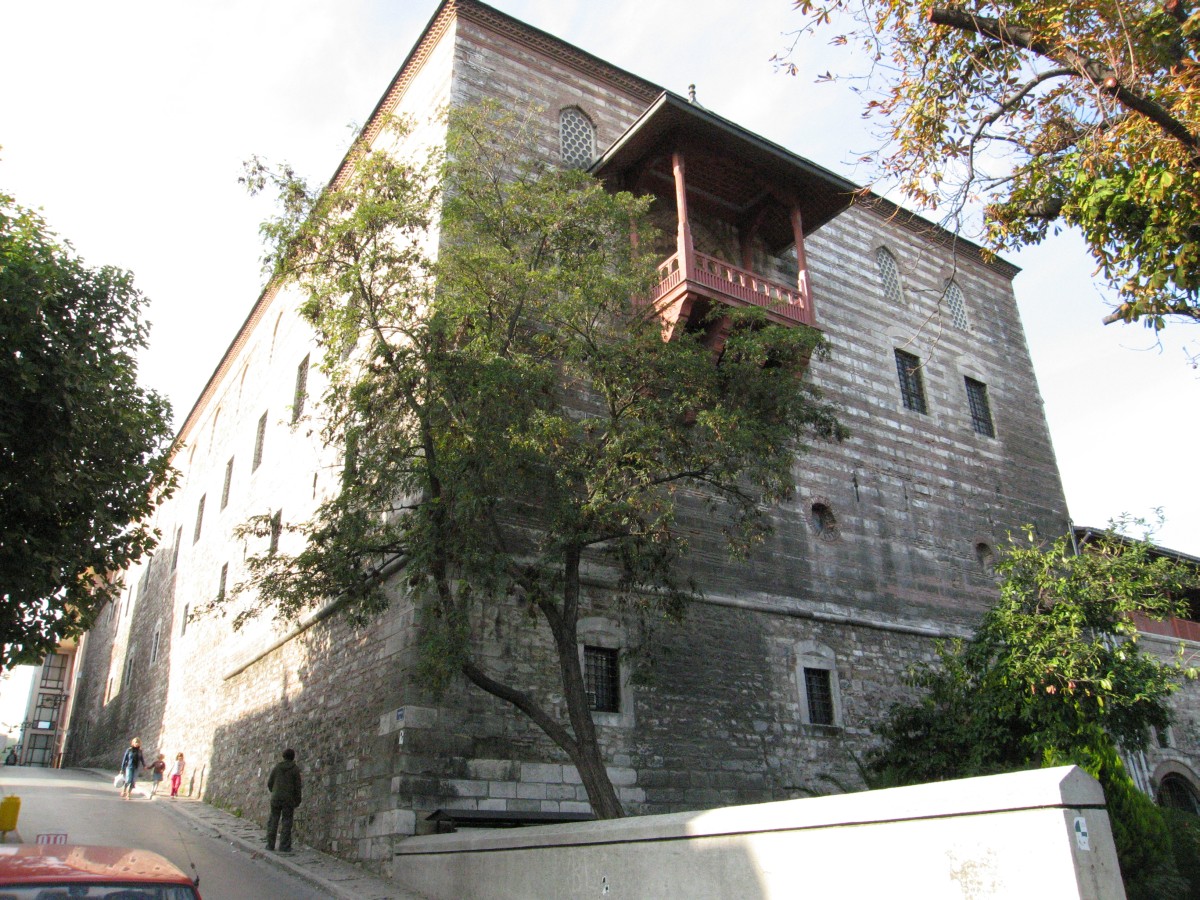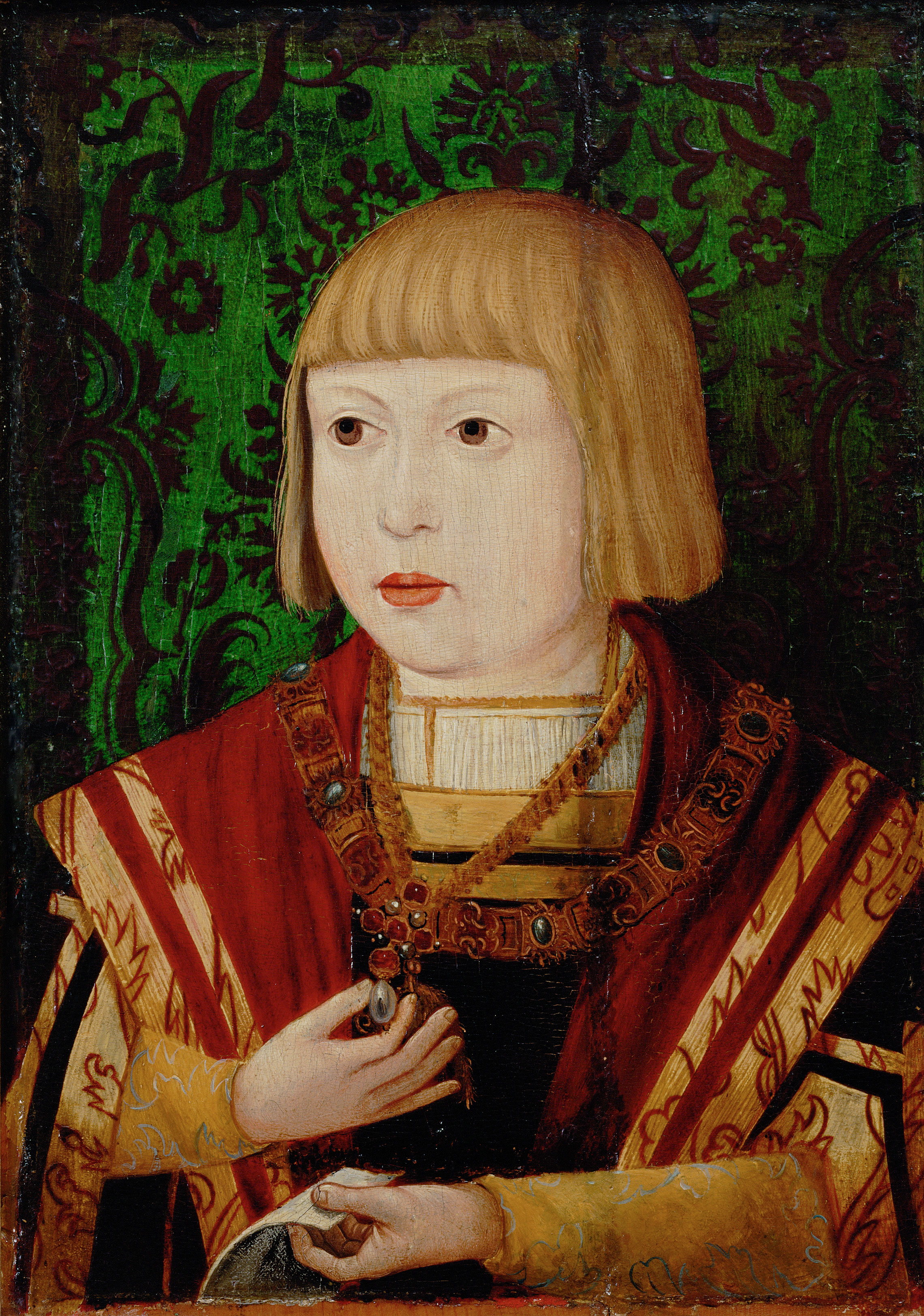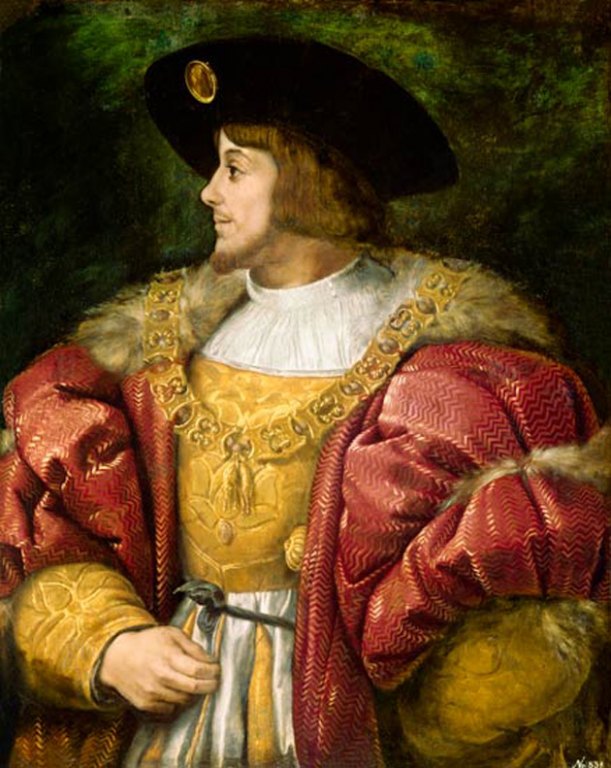|
Mihály Imreffy
Mihály Imreffy de Szerdahely (c. 1458-60 – 1536) was a Hungarian soldier and noble from the Imreffy family, who was master of the horse (), which was one of the high dignitaries in the Kingdom of Hungary. Biography He was born into the Szerdahely branch of the ''gens'' Győr around 1458. His father, György was the first to use the surname of ''Imreffy'' (lit. "son of Imre", after Mihály's grandfather). Mihály first married Krisztina Podmaniczky de Podmanin. The last name of his second wife, Anna, is unknown. He had six children. His great-grandchild János was Chancellor of Transylvania in the beginning of the 17th century. He was present at the Diet of Rákos in 1505 where the magnates decided that they would no longer elect a king from abroad ("order of Rákos"). He participated in the tragically ending Battle of Mohács, where he was captured by the Ottoman Army. Later, he was released by Pargalı Ibrahim Pasha, Grand Vizier of the Ottoman Empire. During the Hu ... [...More Info...] [...Related Items...] OR: [Wikipedia] [Google] [Baidu] |
Imreffy Family
Imreffy de Szerdahely (or ''Imreffi'') was a Hungarian noble family from the Győr (genus), kindred of Győr. Origins The forefather of the family was Péter (c. 1321 – c. 1347), the second son of Ders Szerdahelyi. He inherited the Order of Saint Paul the First Hermit, Pauline monastery in Kaposszerdahely, Szerdahely (today ''Kaposszerdahely'') from his elder brother, Miklós (the ancestor of the Dersffy family). However the lordship of Szerdahely itself remained in Miklós' hand. Péter's great-great grandchild, György was the first member who used the surname of "Imreffy" (''son of Imre'' after his father). His siblings also took the Imreffy last name. Notable members *Miklós, brother of György, Ispán, Vice-ispán (Viscount; ''vicecomes'') of Tolna County (former), Tolna County *Mihály Imreffy, Mihály (c. 1458 – 1536), son of György, Master of the horse (Kingdom of Hungary), Master of the horse, captured in the Battle of Mohács *János Imreffy, János (c. 1559-60 � ... [...More Info...] [...Related Items...] OR: [Wikipedia] [Google] [Baidu] |
Pargalı Ibrahim Pasha
Pargalı Ibrahim Pasha ( 149515 March 1536), was the first Grand Vizier of the Ottoman Empire appointed by Sultan Suleiman the Magnificent. Ibrahim, born as Orthodox Christian, was enslaved during his youth. He and Suleiman became close friends in their youth. In 1523, Suleiman appointed Ibrahim as grand vizier to replace Piri Mehmed Pasha, who had been appointed in 1518 by Suleiman's father, the preceding Sultan Selim I. Ibrahim remained in office for the next 13 years. He attained a level of authority and influence rivaled by only a handful of other grand viziers of the Empire, but in 1536, he was executed on Suleiman's orders and his property (much of which was gifted to him by the Sultan) was confiscated by the state. Biography Origin Ibrahim was born to Orthodox Christian parents in Parga, Epirus, then part of the Republic of Venice. His ethnicity is unknown, but he probably originally spoke a Slavic dialect and also knew Greek and Albanian. His father was either a sai ... [...More Info...] [...Related Items...] OR: [Wikipedia] [Google] [Baidu] |
Hungarian Soldiers
Hungarian may refer to: * Hungary, a country in Central Europe * Kingdom of Hungary, state of Hungary, existing between 1000 and 1946 * Hungarians/Magyars, ethnic groups in Hungary * Hungarian algorithm, a polynomial time algorithm for solving the assignment problem * Hungarian language, a Uralic language spoken in Hungary and all neighbouring countries * Hungarian notation, a naming convention in computer programming * Hungarian cuisine Hungarian or Magyar cuisine (Hungarian language, Hungarian: ''Magyar konyha'') is the cuisine characteristic of the nation of Hungary, and its primary ethnic group, the Hungarians, Magyars. Hungarian cuisine has been described as being the P ..., the cuisine of Hungary and the Hungarians See also * * {{disambiguation Language and nationality disambiguation pages ... [...More Info...] [...Related Items...] OR: [Wikipedia] [Google] [Baidu] |
1536 Deaths
Year 1536 ( MDXXXVI) was a leap year starting on Saturday of the Julian calendar. Events January–March *January 6 – The Colegio de Santa Cruz de Tlatelolco, the oldest European school of higher learning in the Americas, is established by Franciscans in Mexico City. * January 22 – John of Leiden, Bernhard Knipperdolling and Bernhard Krechting are executed in Münster for their roles in the Münster Rebellion. * January 24 – King Henry VIII of England is seriously injured when he falls from his horse at a jousting tournament in Greenwich, after which the fully armored horse falls on him. The King is unconscious for two hours, sustaining an injury to an ulcerated leg and a concussion. * February 2 – Spanish conquistador Pedro de Mendoza founds Buenos Aires in what is now Argentina. * February 18 – A Franco-Ottoman alliance exempts French merchants from Ottoman law and allows them to travel, buy and sell throughout the sultan's domini ... [...More Info...] [...Related Items...] OR: [Wikipedia] [Google] [Baidu] |
Tamás Nádasdy
Baron Tamás Nádasdy de Nádasd et Fogarasföld (I), called the ''Great Palatine'' (1498–1562), was Hungarian nobility, Hungarian nobleman, great landowner and a politician, statesman. Early life Born into the Nádasdy, House of Nádasdy, he was the son of Ferenc I Nádasdy de Nádasd (1492-1541) and his first wife, Orsolya Therjék de Szenterzsébet (d. 1529). After Tamás's mother's death, his father remarried to Orsolya Véssey de Vésse. Biography He was educated at Graz, Bologna and Rome. In 1521 he accompanied Thomas Cajetan (whom the pope had sent to Hungary to preach a crusade against the Ottoman Empire, Turks) to Buda as his interpreter. In 1525 he became a member of the council of state and was sent by Louis II of Hungary and Bohemia, King Louis II to the First Diet of Speyer, diet of Speyer to ask for help in the imminent Turkish war. During his absence the Battle of Mohács, Mohács catastrophe took place, and Nádasdy only returned to Hungary in time to escor ... [...More Info...] [...Related Items...] OR: [Wikipedia] [Google] [Baidu] |
Buda Castle
Buda Castle (, ), formerly also called the Royal Palace () and the Royal Castle (, ), is the historical castle and palace complex of the King of Hungary, Hungarian kings in Budapest. First completed in 1265, the Baroque architecture, Baroque palace that occupies most of the site today was built between 1749 and 1769, severely damaged during the Siege of Budapest in World War II, and rebuilt in a simplified Baroque style during the Hungarian People's Republic, state communist era. Presently, it houses the Hungarian National Gallery, the :hu:Budapesti Történeti Múzeum, Budapest Historical Museum, and the National Széchényi Library. The palace complex sits on the southern tip of Castle Hill (Buda), Castle Hill (). Its defensive walls extend to surround the entire Castle Quarter (Budapest), Castle Quarter (Várnegyed) neighborhood to its north, which is well known for its Medieval architecture, medieval, Baroque architecture, Baroque, and Neoclassical architecture, neoclassical ... [...More Info...] [...Related Items...] OR: [Wikipedia] [Google] [Baidu] |
Ferdinand I, Holy Roman Emperor
Ferdinand I (10 March 1503 – 25 July 1564) was Holy Roman Emperor from 1556, King of Bohemia, King of Hungary, Hungary, and List of rulers of Croatia, Croatia from 1526, and Archduke of Austria from 1521 until his death in 1564.Milan Kruhek: Cetin, grad izbornog sabora Kraljevine Hrvatske 1527, Karlovačka Županija, 1997, Karslovac Before his accession as emperor, he ruled the Erblande, Austrian hereditary lands of the House of Habsburg in the name of his elder brother, Charles V, Holy Roman Emperor. Also, he often served as Charles' representative in the Holy Roman Empire and developed encouraging relationships with German princes. In addition, Ferdinand also developed valuable relationships with the German banking house of Jakob Fugger and the Catalan bank, Banca Palenzuela Levi Kahana. The key events during his reign were the conflict with the Ottoman Empire, which in the 1520s began a great advance into Central Europe, and the Protestant Reformation, which resulted in s ... [...More Info...] [...Related Items...] OR: [Wikipedia] [Google] [Baidu] |
Hungarian Campaign Of 1527–1528
The Hungarian Civil War (Hungarian: Magyar Belháború) or campaign of 1527–1528 was launched by Ferdinand I, Archduke of Austria and King of Hungary and Bohemia and his Hungarian followers against the Ottoman Turks. Following the Battle of Mohács, the Ottomans were forced to withdraw as events elsewhere in their now massive Empire required the Sultan's attention.Turnbull, Stephen. ''The Ottoman Empire 1326–1699''. New York: Osprey, 2003. pg 49 Seizing upon their absence, Ferdinand I attempted to enforce his claim as King of Hungary. In 1527 he drove back the Ottoman vassal John Zápolya and captured Buda, Győr, Komárom, Esztergom, and Székesfehérvár by 1528. Meanwhile, the Ottoman Sultan, Suleiman the Magnificent, took no action at this stage despite the pleas of his vassal. The civil war was preceded by Louis II of Hungary died and the Turks besieged Buda. During this era Hungary broke into 3.: Royal Hungary, Kingdom of Eastern Hungary (or Kingdom of Zápolya) and O ... [...More Info...] [...Related Items...] OR: [Wikipedia] [Google] [Baidu] |
Grand Vizier Of The Ottoman Empire
The grand vizier of the Ottoman Empire ( or ''Sadr-ı Azam'' (''Sadrazam''); Ottoman Turkish language, Ottoman Turkish: or ) was the ''de facto'' prime minister of the Sultan of the Ottoman Empire, sultan in the Ottoman Empire, with the absolute power of attorney and, in principle, removable only by the Sultan of the Ottoman Empire, sultan himself in the classical period, before the Tanzimat Fermanı, Tanzimat reforms, or until the Second Constitutional Era, 1908 Revolution. He held the imperial seal and could summon all other viziers to attend to affairs of the state in the Imperial Council (Ottoman Empire), Imperial Council; the viziers in conference were called "''kubbe'' viziers" in reference to their meeting place, the ''Kubbealtı'' ('under-the-dome') in Topkapı Palace. His offices were located at the Sublime Porte. History During the emerging phases of the Ottoman state, "vizier" was the only title used. The first of these Ottoman viziers who was titled "grand vizier" was ... [...More Info...] [...Related Items...] OR: [Wikipedia] [Google] [Baidu] |
Ottoman Army
The Military of the Ottoman Empire () was the armed forces of the Ottoman Empire. It was founded in 1299 and dissolved in 1922. Army The Military of the Ottoman Empire can be divided in five main periods. The foundation era covers the years between 1300 (Byzantine expedition) and 1453 ( Conquest of Constantinople), the classical period covers the years between 1451 (second enthronement of Sultan Mehmed II) and 1606 ( Peace of Zsitvatorok), the reformation period covers the years between 1606 and 1826 ( Vaka-i Hayriye), the modernisation period covers the years between 1826 and 1858 and decline period covers the years between 1861 (enthronement of Sultan Abdülaziz) and 1918 ( Armistice of Mudros). The Ottoman army is the forerunner of the Turkish Armed Forces. Foundation period (1300–1453) The earliest form of the Ottoman military was a steppe-nomadic cavalry force.Mesut Uyar, Edward J. Erickson, ''A Military History of the Ottomans: From Osman to Atatürk'', Pleager Se ... [...More Info...] [...Related Items...] OR: [Wikipedia] [Google] [Baidu] |
Hungary
Hungary is a landlocked country in Central Europe. Spanning much of the Pannonian Basin, Carpathian Basin, it is bordered by Slovakia to the north, Ukraine to the northeast, Romania to the east and southeast, Serbia to the south, Croatia and Slovenia to the southwest, and Austria to the west. Hungary lies within the drainage basin of the Danube, Danube River and is dominated by great lowland plains. It has a population of 9.6 million, consisting mostly of ethnic Hungarians, Hungarians (Magyars) and a significant Romani people in Hungary, Romani minority. Hungarian language, Hungarian is the Languages of Hungary, official language, and among Languages of Europe, the few in Europe outside the Indo-European languages, Indo-European family. Budapest is the country's capital and List of cities and towns of Hungary, largest city, and the dominant cultural and economic centre. Prior to the foundation of the Hungarian state, various peoples settled in the territory of present-day Hun ... [...More Info...] [...Related Items...] OR: [Wikipedia] [Google] [Baidu] |
Battle Of Mohács
The Battle of Mohács (; , ) took place on 29 August 1526 near Mohács, in the Kingdom of Hungary. It was fought between the forces of Hungary, led by King Louis II of Hungary, Louis II, and the invading Ottoman Empire, commanded by Suleiman the Magnificent and his grand vizier, Pargalı Ibrahim Pasha. The Ottomans achieved a decisive victory through superior planning, firepower, and a well-executed encirclement that overwhelmed the Hungarian forces. The Hungarian army, encouraged by the nobility to engage prematurely, launched a frontal assault that collapsed under coordinated Ottoman counterattacks. King Louis and much of the Hungarian aristocracy were killed, resulting in the destruction of the royal army and the end of the Jagiellonian dynasty in Hungary and Bohemia. The aftermath saw the partition of Hungary between the Ottoman Empire, the Habsburg monarchy, and the Eastern Hungarian Kingdom. The battle marked the beginning of sustained Ottoman–Habsburg wars and the ... [...More Info...] [...Related Items...] OR: [Wikipedia] [Google] [Baidu] |






